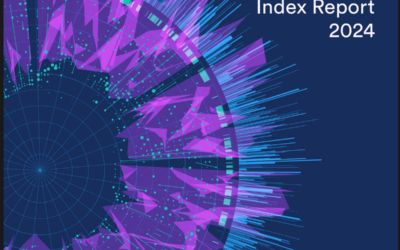The demand for responsive and scalable design solutions has never been greater. Gone are the days of meticulously crafting pixel-perfect pages for every device – it is impossible.
By leveraging Atomic Design principles with tools like Divi for WordPress and Canva, designers can create robust design systems that prioritize speed and scale without sacrificing visual appeal. This approach allows for the seamless creation of consistent, cohesive designs that can be easily customized and scaled across various devices and platforms.
In this dynamic era of web design, the shift towards designing for speed and scale is not just a trend, but a necessity. Let’s explore how Atomic Design principles, paired with innovative tools like Divi for WordPress and Canva, can revolutionize the way we approach design and empower us to create impactful digital experiences that stand the test of time.
This method applies to large-scale projects and benefits smaller tasks, too, ensuring a uniform user experience throughout.
Understanding Atomic Design
Atomic Design is a methodology conceptualized by Brad Frost. It breaks down design structures into fundamental building blocks, much like molecules are structured in chemistry. The idea is to create interfaces from the bottom up, starting with the most minor components and building complexity. The five stages or levels of Atomic Design are:
- Atoms: These are the basic building blocks of all matter and, in web design, include HTML tags like form labels, inputs, buttons, and others that can’t be broken down further without ceasing to be functional.
- Molecules: Molecules are groups of atoms bonded together and are the smallest fundamental units of a compound. These might be a search form with a label, input, and button.
- Organisms are groups of molecules joined together to form a distinct section of an interface, such as a header, which might consist of diverse components, including a logo, navigation, and search form.
- Templates: At this level, organisms are combined to form page-level objects that articulate the design’s underlying content structure.
- Pages: Pages are specific templates that show what a UI looks like with real representative content in place.
Applying Atomic Design in Real-World Scenarios
The real power of Atomic Design is realized when applied to projects where speed is essential. It allows designers to create reusable systems, thus reducing the time and effort required to produce new pages and features. For instance, once a molecule for a button is created, it can be reused throughout the project, ensuring consistency and speeding up the development process.
Using Atomic Design with Divi for WordPress
Divi for WordPress is an excellent tool for implementing Atomic Design. Divi’s robust page builder allows you to visually create and customize your website’s design and layout without needing to write code. Here’s how Divi can be used to apply Atomic Design principles:
- Atoms in Divi: Define global styles for basic elements such as text, buttons, and images. Divi allows you to set these styles universally, ensuring consistency across all pages.
- Molecules and Organisms: Use Divi’s library to create and store custom modules and layouts. For example, you can design a contact form (molecule) and add it to a footer (organism) that can be reused across every page.
- Templates and Pages: Divi enables you to save entire page layouts as templates, which can be deployed and modified for new pages quickly, maintaining design consistency and integrity.
Building an Atom Repository of Web Design Elements in Canva
Building a design system in Canva for your web design elements (photos, illustrations, logos, and other graphic elements) using the principles of Atomic Design involves adapting the structured approach of web design to the more graphic-oriented environment of Canva.
In Canva, start by defining your essential design elements (atoms). This includes your color palette, typography (fonts and sizes), button styles, and any other small, reusable visual graphic elements like icons or basic shapes. Canva allows you to create a brand kit to store and manage these elements. This is crucial for maintaining consistency across your designs.
Build your graphic and illustration library in Canva and then import it into WordPress so that you can begin creating molecules in Divi.
A molecule might be a specific combination of a text box (using your predefined fonts) and a button or an icon placed next to a particular piece of text. You can create these molecules as individual atoms within Canva to be reused across various pages.
Accelerating Web Design Projects with Divi and Atomic Design
The combination of Divi and Atomic Design can significantly accelerate web design projects. You can quickly assemble new pages and adapt existing ones by building a library of reusable components. Moreover, Divi’s global settings and content modules allow for easy updates and changes across the entire website, reflecting new styles or adjustments without manual, page-by-page revisions.
In conclusion, when Divi and Atomic Design are used together, they create a powerful toolkit for web developers and designers aiming to build scalable, consistent, and efficient websites. This methodology not only speeds up the design process but also ensures a high level of maintainability and flexibility in web projects.



